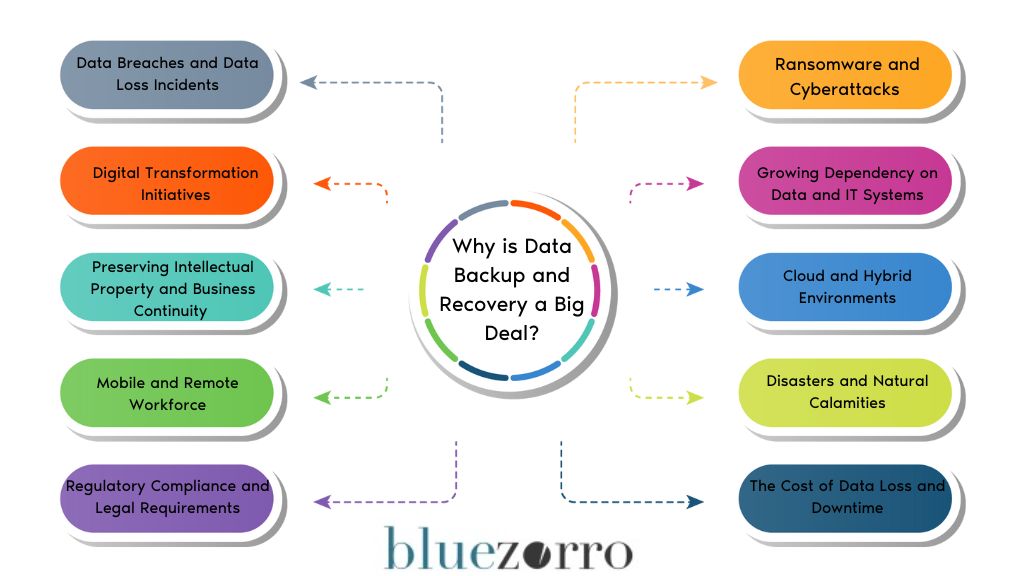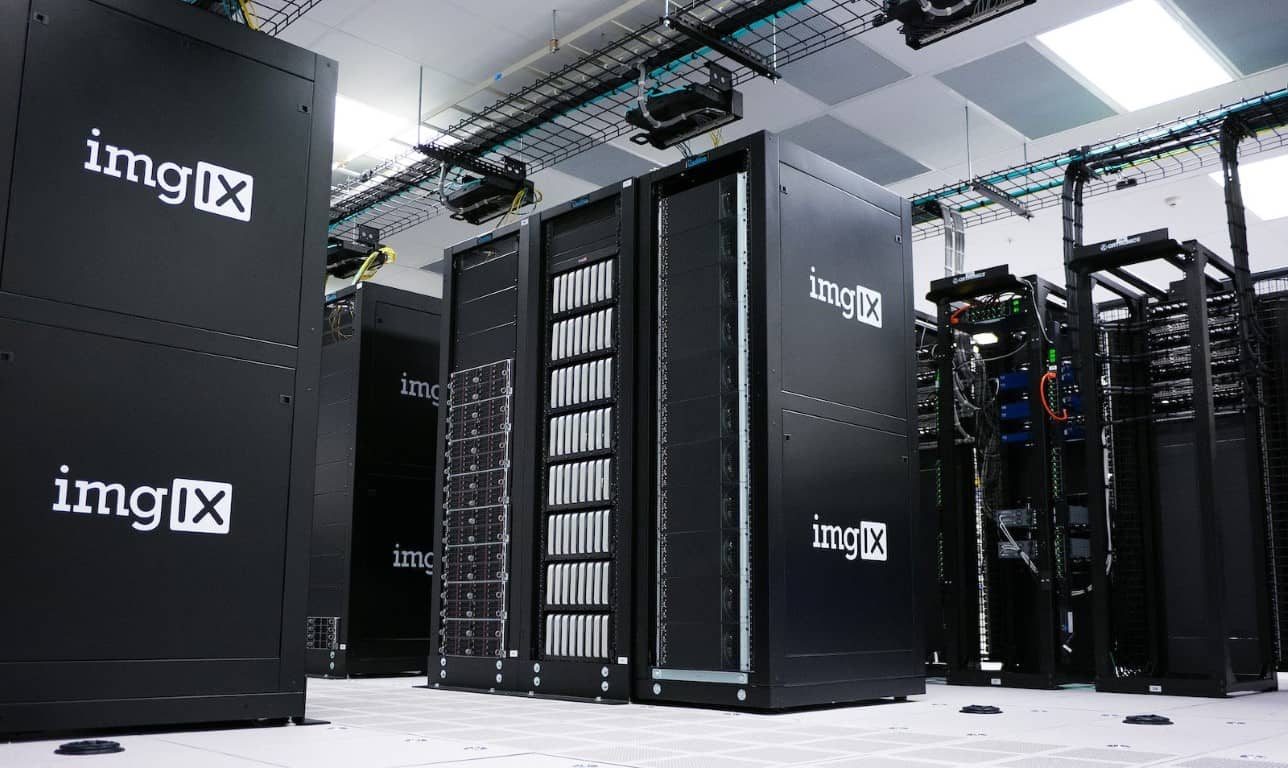Businesses today are relying more and more on technology, like artificial intelligence, to transform and grow. This means they are also dealing with an enormous amount of data.
Experts predict that the amount of global data will double by 2026. As a result, many companies are increasing their investment in Big Data projects.
While this presents exciting opportunities, it also brings new challenges.
One of the biggest challenges is ensuring that businesses have a robust strategy in place to protect their data. Unfortunately, the threat of ransomware attacks is on the rise.
Approximately one-fifth of internet users were affected when close to a billion emails were compromised within a single year.
The average downtime for these victims was two weeks. And that’s not all – there are other threats to consider, like natural disasters and accidental data deletion.
But here’s the alarming part: backup repositories have become a primary target for ransomware attacks.
94% of attacks target backups, and at least 68% of cyber events impact backup repositories. This means that even if you have backups, they may not be safe.
No matter where your data is stored – in the cloud, at the edge, or on your premises – it is essential to have a secure backup and recovery plan in place. This is a crucial part of your overall security strategy as a business.
So, as you navigate the world of digital transformation and embrace new technologies, don’t forget to prioritize the protection of your data.
It’s worth investing in a resilient backup and recovery strategy to safeguard against these escalating threats.
Why is Data Backup and Recovery a Big Deal In 2023?

Technology is a constantly evolving landscape, posing threats and opportunities for companies all the time.
Depending on your use case and the type of niche industry you’re working in, as a business, here are some of the reasons why data backup and security are super important.
1. Ransomware and Cyberattacks
In the initial six months of 2022, there were about 236.1 million instances of ransomware attacks across the globe.
The threat of ransomware and other cyberattacks remains a significant concern in 2023.
Cybercriminals are constantly developing more sophisticated attack methods, and businesses are at risk of losing access to their data.
Nearly 39% of companies based in the UK disclosed that they were victims of a cyber attack in the year 2022.
Regular backups ensure that organizations can recover their critical information even if it becomes encrypted or inaccessible due to an attack.
2. Data Breaches and Data Loss Incidents

During the initial three months of 2023, data breaches led to the exposure of over six million data records globally.
Data breaches can result from various factors, including human error, hardware failures, or malicious activities.
In 2023, the volume of sensitive data collected and stored by businesses continues to increase.
Data loss incidents can lead to severe financial and reputational consequences. A reliable backup and recovery strategy helps mitigate these risks.
3. Regulatory Compliance and Legal Requirements
Data protection regulations are becoming more stringent worldwide. Organizations need to comply with these regulations to avoid fines and legal actions.
Data backup and recovery play a crucial role in maintaining data integrity and availability, which is essential for meeting compliance requirements.
4. Growing Dependency on Data and IT Systems
Businesses increasingly rely on data-driven decision-making processes and digital infrastructure.
Interruptions to data access or system failures can disrupt operations, impact customer trust, and lead to financial losses.
Regular data backups enable faster recovery and minimize downtime.
5. Cloud and Hybrid Environments
As more businesses migrate to the cloud and adopt hybrid IT infrastructures, the need for data security measures, including data backups, increases.
While cloud providers are responsible for the overall integrity of their platforms, the end user or business still needs to ensure the safety of their data.
Providers generally offer measures such as redundancy, data replication, and certain security protocols.
However, these are not infallible and may not cover all potential data loss scenarios, such as accidental deletion or malicious attacks.
Regular data backups can serve as a safety net, ensuring businesses can restore their data and resume operations even if an issue arises with their cloud service.
6. Disasters and Natural Calamities
Natural disasters such as floods, fires, or earthquakes can lead to catastrophic data loss if a business’s primary infrastructure is located in the affected area.
Accidents or unforeseen events such as power outages or system failures can similarly result in data loss.
By implementing offsite or cloud-based backups, organizations can protect their data from such disasters.
Offsite backups stored in geographically diverse locations can ensure that at least one copy of data remains safe.
Cloud-based solutions offer scalability and instant access to backups, ensuring quick recovery times and minimal operational disruption.
7. Digital Transformation Initiatives
Digital transformation often involves migrating large amounts of data to new systems or platforms. This migration process is complex and can introduce risks of data corruption or loss.
A single error or issue during migration can result in significant data loss. Data backup and recovery solutions can help mitigate this risk.
Performing regular backups before, during, and after migration ensures that a copy of data is always available.
Moreover, having a recovery procedure in place can enable organizations to quickly restore data to its original form if any corruption or loss occurs during migration.
8. Preserving Intellectual Property and Business Continuity
Intellectual property (IP) and proprietary data represent invaluable assets that give businesses their competitive edge. Data loss can lead to substantial financial losses and damage a company’s reputation.
Furthermore, for many businesses, data is essential for day-to-day operations. Thus, loss of data can lead to operational disruptions and impact business continuity.
Regular data backups can safeguard these vital assets, protecting them from threats such as cyber-attacks, accidental deletions, and hardware failures.
With proper backup strategies, businesses can quickly restore their data and resume operations, ensuring business continuity even during unforeseen disruptions.
9. Mobile and Remote Workforce

As remote work becomes increasingly common, organizations are faced with the challenge of securing and managing data distributed across a variety of devices and locations.
Employees working remotely often use their personal devices or software company-provided equipment to access and store business data.
This distribution of data introduces a range of vulnerabilities, from device theft or loss to cyberattacks aimed at unsecured home networks.
Regular data backups can help safeguard this distributed data by ensuring that all business-critical data, no matter where it resides, is regularly consolidated and secured.
If an issue arises with a remote device, data can be restored from the backup, ensuring its continued availability.
Additionally, data backup solutions can also incorporate security measures such as encryption, further enhancing the protection of data in transit and at rest.
10. The Cost of Data Loss and Downtime
The cost of data loss and downtime can be immense for businesses. It’s not just the loss of the data itself that can be damaging, but also the impact on operational efficiency and customer trust.
The time and resources required to recreate or recover lost data are significant, and in some cases, lost data may be irreplaceable.
Downtime, when operations come to a halt due to data loss, can lead to missed opportunities, revenue loss, and increased recovery expenses.
For some businesses, prolonged downtime could even threaten their survival.
Furthermore, regulatory penalties and loss of customer trust resulting from data loss can impact a business’s reputation and financial stability long term. A robust data backup and recovery strategy can help avoid these costs.
By ensuring data can be quickly restored after a loss, businesses can minimize downtime, preserve customer trust, and avoid the extensive costs associated with data loss.
What Are The Different Types of Data Backup Methods These Days?

There are different types of backup methods that businesses can use to protect their data.
Full Backups
One common method is full backups, which make an exact copy of all data regularly. This provides comprehensive protection but can be time-consuming and resource-intensive.
Differential Backups
Another option is differential backups, which only save the changes made since the last full backup.
This reduces backup times and storage requirements while still providing robust protection against data loss.
Incremental Backups
Incremental backups are similar to differential backups but only save the changes made since the last incremental backup.
This requires less storage space than full or differential backups but may take longer to restore data in case of a disaster.
No matter which method a business chooses, it is critical to regularly test backup systems to ensure they are working correctly and can restore lost data if necessary.
By taking proactive steps to safeguard information, companies can avoid significant disruptions caused by cyberattacks, hardware failures, or natural disasters and continue operating smoothly even in challenging circumstances.
So, it’s important to carefully select the appropriate backup method that suits the business’s needs and regularly check if the backup systems are functioning properly.
This will ensure that the valuable data is protected and can be recovered efficiently in case any unwanted situation arises.
It’s better to be safe than sorry when it comes to data backup and recovery.
Best Ways to Implement Data Backup and Recovery Programs
Here’s a quick take on implementing data backup and recovery strategies at your company.
Including Data Recovery In Data Backup Processes
Make sure to include your data backup systems in your disaster recovery and incident response plans.
You never know when something might go wrong, like a ransomware attack or a natural disaster.
These situations can compromise or even destroy your backups. And if you don’t have a plan in place for when that happens, your entire strategy can be thrown off.
Think about it. You spend all this time and effort creating backups of your important data, but if those backups aren’t protected and accounted for in your DR plan, they might as well be useless.
It’s like having a spare tire in your car, but not knowing how to change it when you get a flat. What’s the point?
That’s why it’s crucial to outline exactly what you’ll do if your backups are breached, compromised, or destroyed.
You need a plan for every possible scenario. And it’s not just about the technical aspect of restoring the data.
You also need to consider the legal and regulatory implications, as well as the potential impact on your business operations.
So, when you’re creating your DR strategy, don’t forget about your backups. Make sure they’re included and accounted for. Because when disaster strikes, you’ll be glad you took the time to plan.
Introduce User Privileges & Roles With Multiple Data Points
When it comes to data backups, it’s important to limit access rights.
Only give backup access to those who need to be involved in the backup process. This includes both the backup software and the backup files themselves.
Don’t forget about systems that are on the local network and in the cloud – they may also provide backup access.
Another thing to consider is where you store your backups. It’s a good idea to have them stored offsite or in a separate building.
You never know when a natural disaster, fire, or other rare but impactful incident could occur. If something were to happen to your data centre, you don’t want your backups to be taken out at the same time.
It’s always better to be safe than sorry when it comes to data backups. Taking these precautions can help ensure that your important data is protected and that you have access to it when you need it. So, remember to limit access rights and consider different backup locations for added security.
Limited Physical Access To Data Backups
Make sure to limit physical access to your data backups. It doesn’t matter how you store them, whether it’s on backup servers, NAS, external drives, or tapes.
The important thing is to control access to these facilities properly. Treat your backup files as you would treat any other critical hardware. It’s a good idea to review SOC audit reports, and independent security assessment reports, or conduct your audits to ensure proper validation.
Take the necessary steps to protect your data backups and prevent unauthorized access. This can help mitigate the risk of data breaches or loss.
By implementing strict access controls, you can enhance the security of your backup systems.
Remember, your backups contain valuable information and should be safeguarded just like any other sensitive data.
So, don’t overlook the importance of limiting physical access to your data backups.
Ensuring Well Protected Backup Devices
It’s important to protect backup media devices.
While many people store their backups on hard drives or solid-state drives, some still use portable drives, tapes, and related media.
If you’re using these types of backup media, it’s crucial to use a fireproof and media-rated safe.
You might think that storing backups in a “fireproof” safe is enough, but often these safes are only rated for paper storage.
The thing is, backup media like tapes, optical disks, and magnetic drives have a lower burning and melting point than paper.
So if you’re using a standard fireproof safe, it’s not going to provide the level of security you need.
So what should you do? Look for a safe that is specifically designed to protect media devices.
These safes are tested to withstand higher temperatures and provide better protection against fire. Don’t just rely on the label “fireproof” without checking if it’s also media-rated.
Investing in a quality media-rated safe will give you peace of mind knowing that your backup media is well-protected.
Don’t let a false sense of security lull you into thinking that any old fireproof safe will do. Take the extra step to ensure that your
Regular Testing and Comprehensive Backups
Backups are important. That’s something you’ve probably heard a lot. But it’s worth repeating.
Your backups are only as good as what’s on the backup media. Remember that. There are two things to consider when it comes to backups.
a. Ensure Complete Backup
First, make sure you’re backing up everything important. Don’t just focus on the servers or applications.
Take a look at all the unstructured data floating around your network and in the cloud. Is it getting backed up? It should be.
b. Test your Backups
Second, test your backups regularly. Even if you’re not seeing any errors, it’s still a good idea to give them a test run.
Trust me, you don’t want to find out when it’s too late that your backups aren’t legitimate. Or worse, that you backed up the wrong data or no data at all. That would be a nightmare.
c. Identify Vulnerabilities
Chances are, your data backup processes and systems have some weaknesses. It’s important to find out where you’re vulnerable before disaster strikes. Take a close look at everything and identify any gaps.
And if you need help, consider bringing in a third party to give you an unbiased assessment. It’s those little problems that often go unnoticed that can cause the most pain later on. So be proactive and make sure your backups are solid.
BlueZorro: Your Strategic Partner for Robust Data Backup and Recovery in 2023

In the ever-evolving digital landscape of 2023, a robust data backup and recovery strategy has become critical for every business.
BlueZorro, a leading provider of custom software development managed services, understands this necessity deeply.
We recognize the complexity and vulnerability associated with data management in today’s diverse IT ecosystems, including cloud and hybrid environments, remote workforces, and digital transformation initiatives.
BlueZorro offers bespoke software solutions tailored to your unique business needs.
Our custom-built data backup and recovery tools are designed to ensure that your data, irrespective of where or how it’s stored, remains protected, accessible, and resilient.
We employ robust encryption standards to secure data both in transit and at rest, providing added layers of protection for remote and mobile workforces.
At our company, we specialize in all aspects of web application design, development, and maintenance.
As a leading web app development firm, we offer a comprehensive range of services to cater to your needs:
Interactive Designs
We craft engaging and interactive web application designs that captivate your audience.
Our team delivers mobile-friendly web application designs to provide a fluid user experience across devices.
Personalization
Our full-stack developers are on hand to construct cutting-edge web applications tailored to your specifications.
Strong Security Measures
We implement strong security measures to protect your valuable data from threats.
Our ongoing maintenance and support services ensure your web application functions optimally at all times.
Web App Testing
Before launching your app, we conduct thorough web app testing to identify and rectify any bugs or potential issues.
Our seasoned developers are adept at utilizing the most recent technologies and frameworks, ensuring your web application is modern and up-to-date, while also satisfying your specific business objectives.
Contact us today for more information and details!
Conclusion
As we move further into the digital age, the importance of data backup and recovery in 2023 cannot be overstated.
With the increasing adoption of cloud and hybrid environments, the rise in remote workforces, and continuous digital transformation initiatives, data is both more vulnerable and more valuable than ever before.
Natural calamities and cyber threats pose constant risks to the integrity of data, while the potential cost of data loss and downtime continues to escalate. Intellectual property and proprietary data, crucial for business competitiveness, must be safeguarded diligently.
A robust data backup and recovery strategy serves as an essential protective layer, ensuring business continuity and securing invaluable assets.
As we navigate through this dynamic digital landscape, the capability to quickly and efficiently restore data from a reliable backup is not just an optional precaution, but a business imperative.


